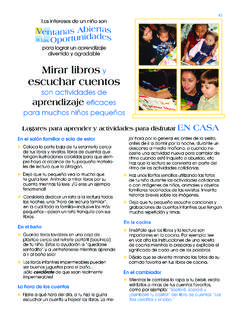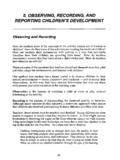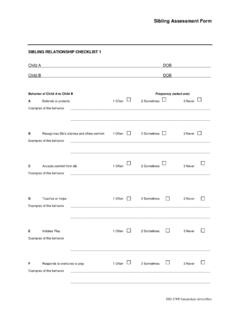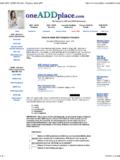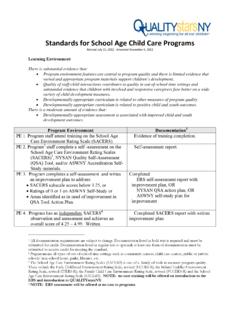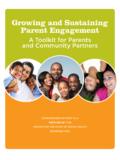Transcription of Center onCenter on Everyday Child Language …
1 Center onEverydayCenter on EverydayChild Language LearningCarol M. Trivette, Hawks Puckett InstituteAsheville and Morganton, North CarolinaAsheville and Morganton, North CarolinaDivision of Early Childhood, Council for Exceptional Children Minneapolis, MN October 28-30, 2012 Who Is Participating?Who Is Participating? Children 8 28 months of age who are enrolled in early interventionearly intervention The children s parents or other primary caregivers Part C Practitioners2 Who Is Delivering the Intervention?g Parents of the participating childrenparticipating children Parents are guided in their use of thein their use of the practices by Child Development Child Development Specialists (DE) Speech pPathologists (NC) Early Iii(TN)3 Interventionists (TN)
2 Two TypesofTwo Types ofEvidence-Based Practices Evidence-Based Implementation Practices Adult learning MethodsEvidenceBased Intervention Practices Evidence-Based Intervention Practices Early Childhood Intervention Practices4 CECLL Model ComponentsCaregiver-Mediated Instructional PracticesLanguage-Rich Childa guagecEveryday ActivitiesCdInterestsCommunicationdLand LanguageSkillsIncreasedLanguage- learning Otiti5 OpportunitiesChild I ttChild InterestsTheuse of Child interests for promotingThe use of Child interests for promoting communication and Language learning is an important foundation of this Everyday Language intervention model. Child interests are a Child s personal likes, Child interests are a Child s personal likes, preferences, favorites, strengths, and so forth that encourage Child participation with people and things.
3 6I flf Child I ttInfluence of Child Interestson learning and DevelopmentChildInterestsExplorationEver ydayEngagementExplorationand MasteryLanguageLearningOpportunitiesComm unication7 CompetenceChild Interests ChecklistConsider your dtdi funderstanding of and ability to use the practicesthe Activities and Routinese yday ces a d ou es9 Everyday Activities and Routinese yday ces a d ou es10 Everyday learning Activity Checklist11 Responsive Teaching Attend to Child when he/she is interested in something Provide Child time to initiate interactions If the Child is does not initiate interactions, prompt by asking a question ppy gqaround what the Child is doing Respond promptly and positively matching amount, pace, and intent of the Child s behavior Encourage Child s use of Language in a variety of ways: Open-ended questions Repeating and extending what the Child says.
4 Provide a label or new word for an object the Child initiates toward or for an action the Child initiates. Make a suggestion that encourages the Child to say or describe something in another way (in a more complex way)something in another way (in a more complex way). Give the Child information about what he/she is showing interest in. Add materials to an activity to encourage more or different Language . Arrange materials within an activity in ways that encourage the Child to12 Arrange materials within an activity in ways that encourage the Child to use Language . Caregiver Responsive Teaching Checklist13 Sand Table Video Child s Level of Intensity Mother s general style when participatingMother s general style when participating Mother s communication style and strategies Child s response to mother14 View videoOutside Water Table_215 Videodeo The Child is so focused on this activity Mother was also very engaged in the activity and was a active participant and so is a obvious communication partnerso is a obvious communication partner Responded promptly and positively Encouraged new the Child s use of Language Asked open-ended questions.
5 Encouraged her son to elaborate16 Fidelity Measuresde y easu esFidelity of Ptiti U fConsistency of iii Completed by CECLLffPractitioner Use of Everyday learning Practicesinterventionists practices with the model CECLL staff every contact with practitionersPractitioner Implementation of the Model PracticesExtent of practitioner use of model practicesCompleted by practitioners monthly for eachthe Model Practicesof model practices with each family monthly for each familyWeekly Parent Number, frequency, Completed by Feedback Formand characteristics of learning activitiesparents every week17100 Child InterestsEveryday learning ActivitiesResponsive Teaching100 Child InterestsEveryday learning ActivitiesResponsive Teaching8090100 CATORS8090100 CATORS506070 DELITY INDI506070 DELITY INDI203040 CENT OF FID203040 CENT OF FID010201 23 45 67 89 1011 12 PERC010201 23 45 67 89 1011 12 PERCF idelity of Early Intervention Practitioners 123456789101112 MONTHS123456789101112 MONTHS18 Training of Parents on the CECLL PracticesParent Fidelity ScaleMeasures the bfnumber, frequency.
6 And characteristics of the learning activitiesthe learning activities in which the Child participated during ppgthe last week19 ParentInterventionFidelityParentInterven tionFidelity8090100 ATORSP arent Intervention Fidelity8090100 ATORSP arent Intervention Fidelity607080TY INDICA607080TY INDICA304050OF FIDELIT304050OF FIDELIT01020 PERCENT O01020 PERCENT O01 23 45 67 89 1011 12 PMONTHS01 23 45 67 89 1011 12 PMONTHS20 Parent InterviewsParent Interviews What did you like about the approach? Did your understanding of how to help your Child s Language change as a ygggresult of this project? 21 Parent video22 Parent OutcomesAssesses parent s ftisense of parenting confidence, competence andcompetence, and enjoyment23 Parenting OF INTERVENTION24 Center on Everyday ChildCenter on Everyday Child Language Learningwww cecll M.
7 Trivette, @puckett

